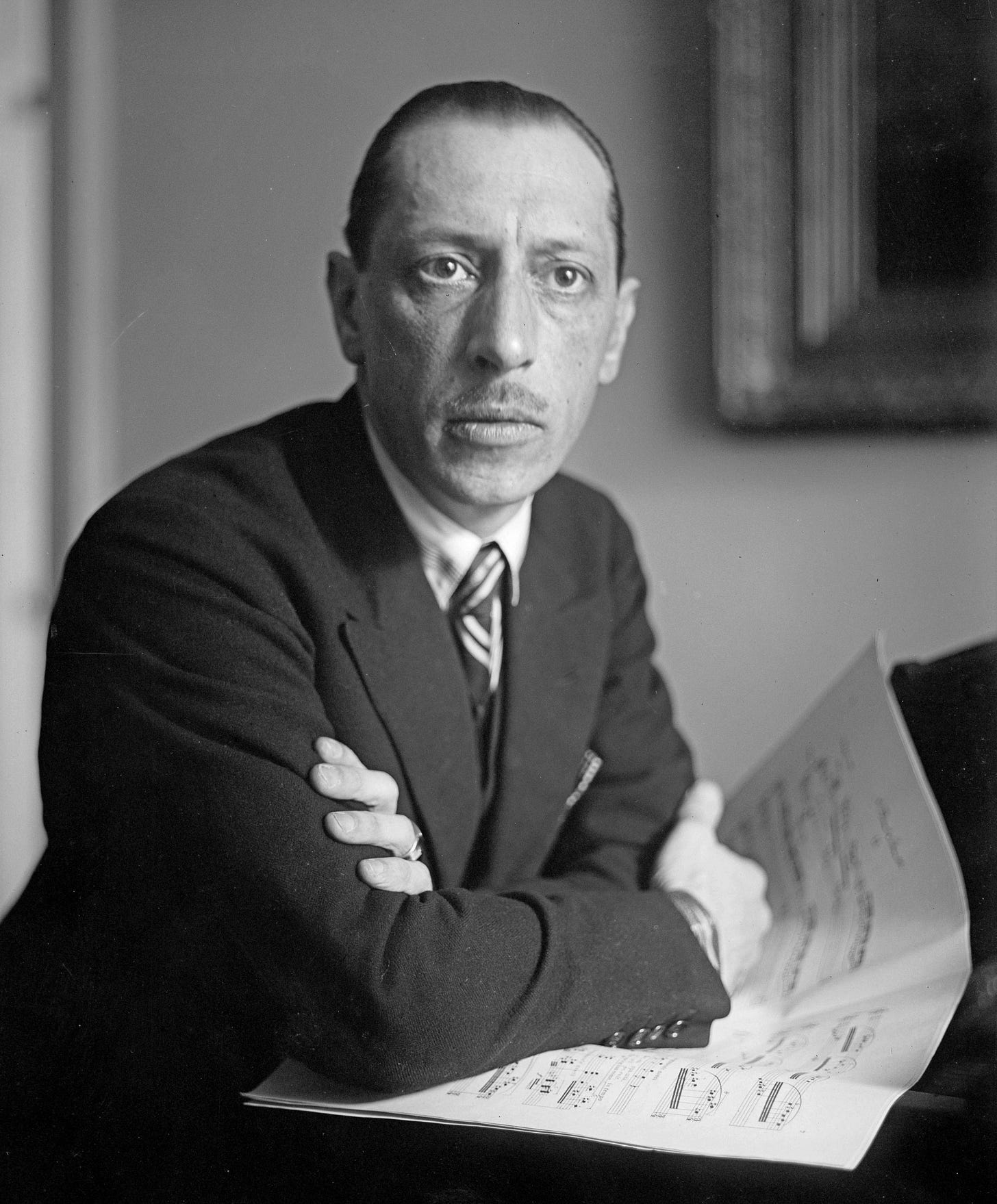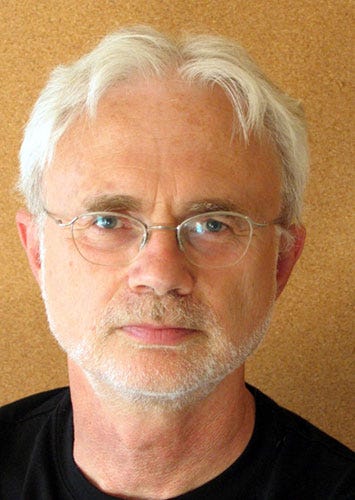Drop the Needle - Evolution of the Symphony: The Symphony in the 20th and 21st Centuries
Stravinsky, Adams, and Higdon
"Art is not what you see, but what you make others see."
— attributed to Edgar Degas (1834-1917), French artist, and one of the founders of Impressionism.
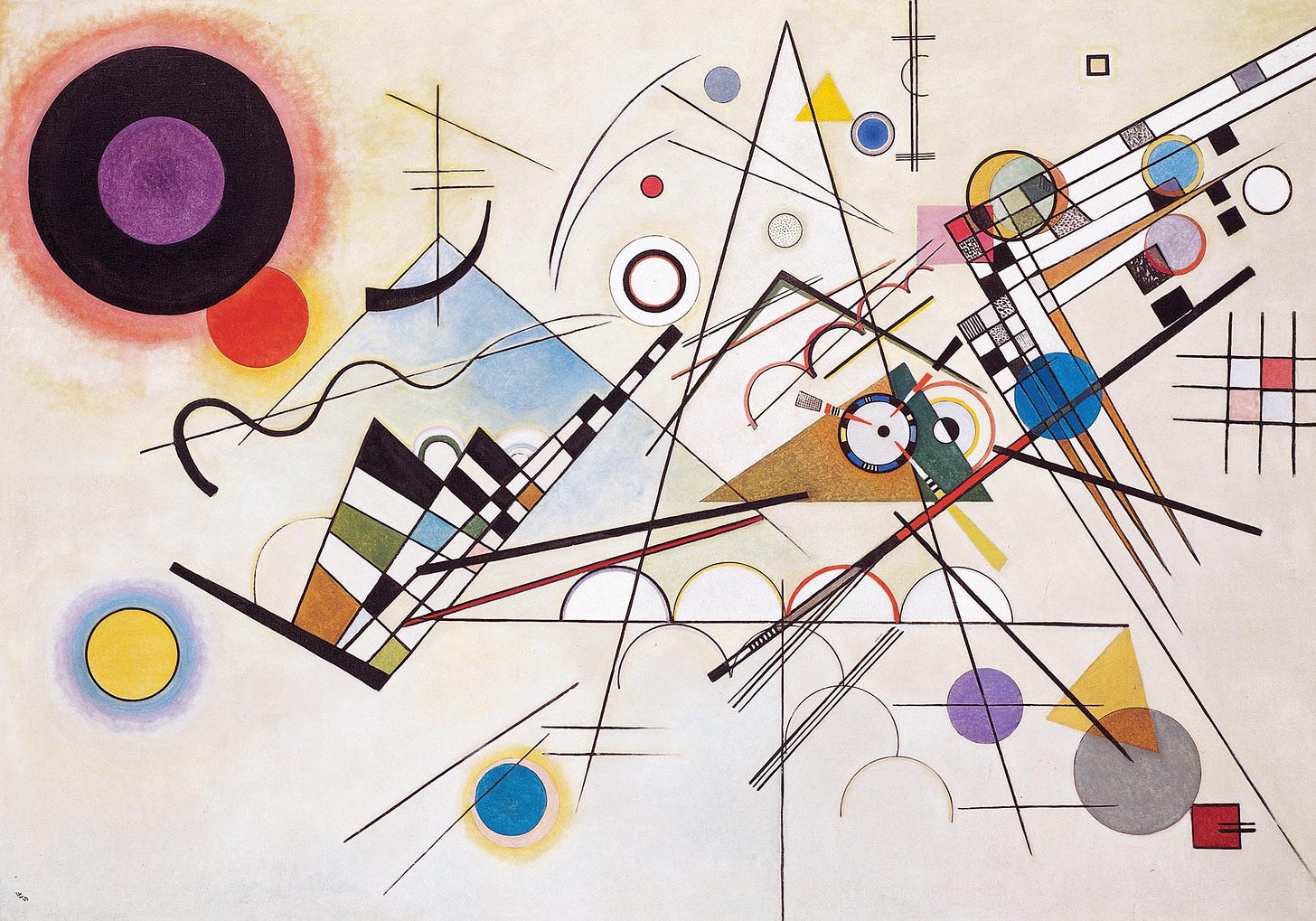
When I created Drop the Needle, my idea was that the reader could keep a browser tab open and listen to the music by clicking through the linked performances—a ‘listen while you work’ model. To keep that feature seamless, I’ve added the Grand Unified Spotify Playlist right at the top. This playlist features all the music from this issue in one convenient place, just one easy click away. Dive into the vibrant and dynamic world of modern music with Stravinsky, Adams, and Higdon. Click below to listen!

Symphony in C by Igor Stravinsky was premiered on November 7, 1940, by the Chicago Symphony Orchestra under the baton of the composer himself. This premiere, met with critical acclaim, marked a significant moment in Stravinsky's career, showcasing his neoclassical style1 amidst the backdrop of a world on the brink of the chaos of World War II.
Symphony in C was composed during a tumultuous period in Stravinsky's life. In 1938, Stravinsky faced a series of personal tragedies: the deaths of his wife, Catherine, and his eldest daughter, Ludmila, both from tuberculosis, along with the death of his mother. These events, coupled with the looming threat of World War II, deeply influenced his creative process. Stravinsky began the symphony in Europe and completed it in 1940 after moving to the United States, and reflects his geographic and emotional journey.
The Symphony in C is a quintessential example of Igor Stravinsky's neoclassical period. It reflects Stravinsky's return to classical forms and structures, which he modernizes with his unique rhythmic and harmonic language. Stravinsky's neoclassical style draws on the clarity, balance, and order of classical music, particularly from composers like Haydn and Mozart, while infusing it with 20th-century techniques and sensibilities.
The work is structured in four movements, each written in distinct Classical form:
1. Moderato alla breve: The first movement opens with a lively, crisp theme, immediately establishing a sense of clarity and order. The orchestration is lean, with transparent textures that allow the intricate counterpoint to shine—a testament to neoclassical form as aesthetic.
2. Larghetto concertante: The second movement offers a lyrical contrast to the first, featuring delicate wind solos and a more contemplative atmosphere. The interplay between the solo instruments and the orchestra creates a chamber music-like intimacy.
3. Allegretto: The third movement, a playful and rhythmic scherzo, showcases Stravinsky's ingenuity in manipulating rhythms and meters. The light, dance-like character is balanced by moments of surprising harmonic shifts.
4. Largo — Tempo giusto, alla breve: The final movement begins with a somber Largo introduction, gradually building to a spirited and dynamic conclusion. The Symphony ends with a sense of resolution, as Stravinsky deftly weaves together the thematic material from the previous movements.
Igor Fyodorovich Stravinsky (1882 – 1971), Russian, French citizenship (from 1934), American citizenship (from 1945) - Symphony in C
YouTube Performance: Berliner Philharmoniker conducted by Herbert von Karajan, recorded in 1969
Spotify Performance: Berliner Philharmoniker conducted by Sir Simon Rattle.
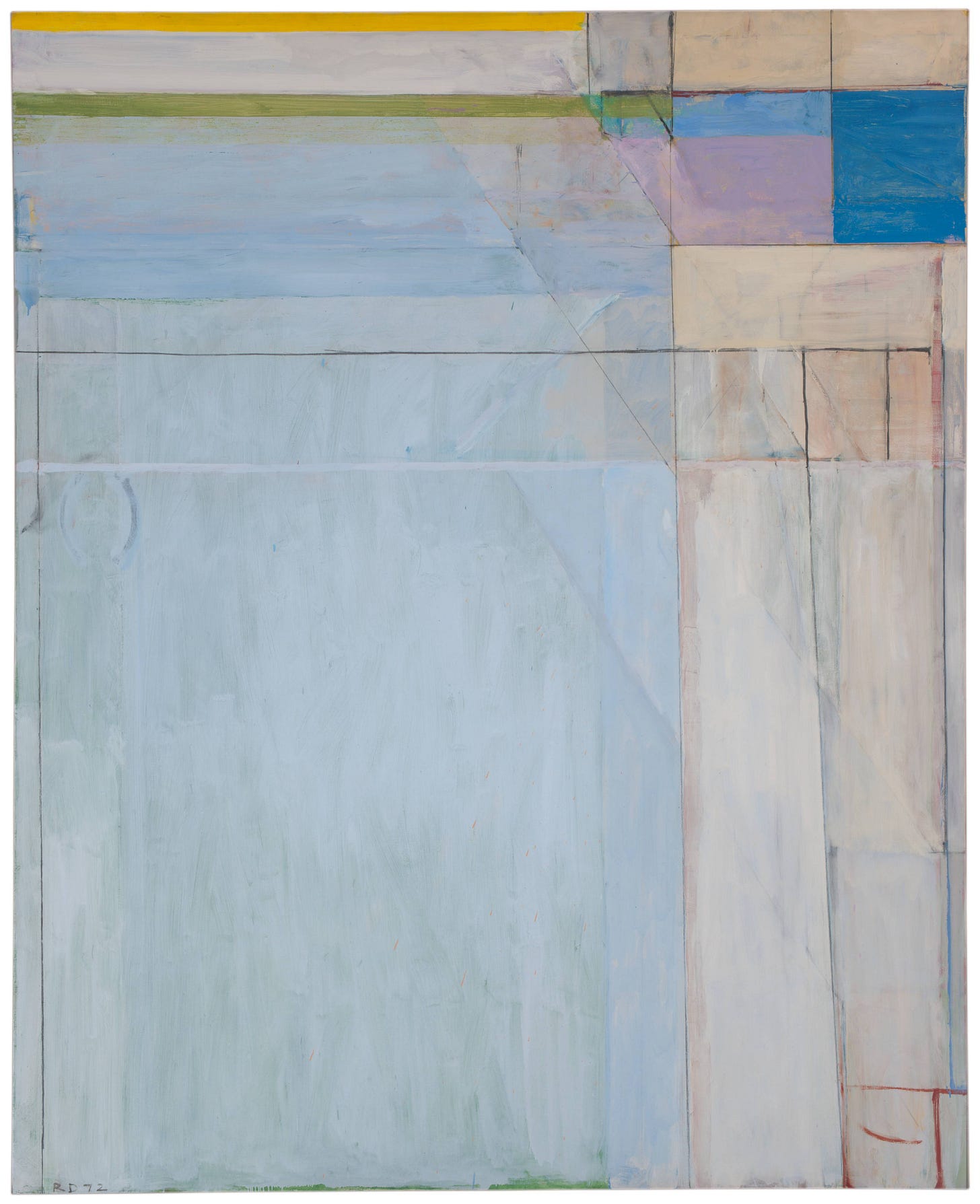
Harmonielehre by John Adams premiered on March 15, 1985, performed by the San Francisco Symphony under the direction of Edo de Waart, who also conducts the YouTube performance below. This groundbreaking work marked a significant moment in contemporary classical music, establishing John Adams as a leading figure in the genre.
Harmonielehre was met with critical acclaim at its premiere and has since become one of John Adams' most frequently performed works. Critics praised its innovative fusion of minimalism and romanticism, as well as its emotional depth and structural coherence. The piece is considered a pivotal work in late 20th-century classical music, influencing a generation of composers and solidifying Adams' reputation as a master of orchestral writing.
John Adams composed Harmonielehre during a period of personal and artistic transition. The title, German for "Study of Harmony," pays homage to Arnold Schoenberg’s 1911 text of the same name, yet the music diverges sharply from Schoenberg's atonal style. Instead, Adams combines minimalist techniques with lush, romantic orchestration, creating a unique and compelling soundscape.
Adams was inspired by a vivid dream in which he saw a massive tanker ship lift off from the waters of San Francisco Bay and ascend into the sky like a Saturn V rocket. This powerful and surreal image became a central metaphor for the composition, symbolizing a journey from the mundane to the transcendent. The dream's influence is particularly evident in the first movement, which begins with a vigorous and propulsive energy.
Harmonielehre is a large-scale symphonic work divided into three movements:
Part I: The first movement opens with a powerful E-minor chord that repeats insistently, driving the music forward with a sense of urgency and relentless momentum. This movement features rapid, rhythmic patterns and dense harmonies, blending minimalist repetition with a dramatic, almost Mahlerian orchestral palette.
Part II: The Anfortas Wound: The second movement is more introspective, taking its title from the legend of Anfortas2, the wounded king from the Arthurian Grail stories. The music here is somber and reflective, with haunting melodies and a more subdued orchestration that evokes a sense of longing and melancholy.
Part III: Meister Eckhardt and Quackie: The final movement is named after the medieval mystic Meister Eckhardt3 and Adams' own nickname for his daughter, Emily (Quackie). This movement is more buoyant and playful, featuring bright orchestral colors and a triumphant conclusion that echoes the opening’s assertive energy but transforms it into a celebratory affirmation.
John Adams (b. 1947), American - Harmonielehre
YouTube Performance: Hong Kong Philharmonic Orchestra conducted by Edo de Waart
Spotify Performance: Berliner Philharmoniker conducted by John Adams
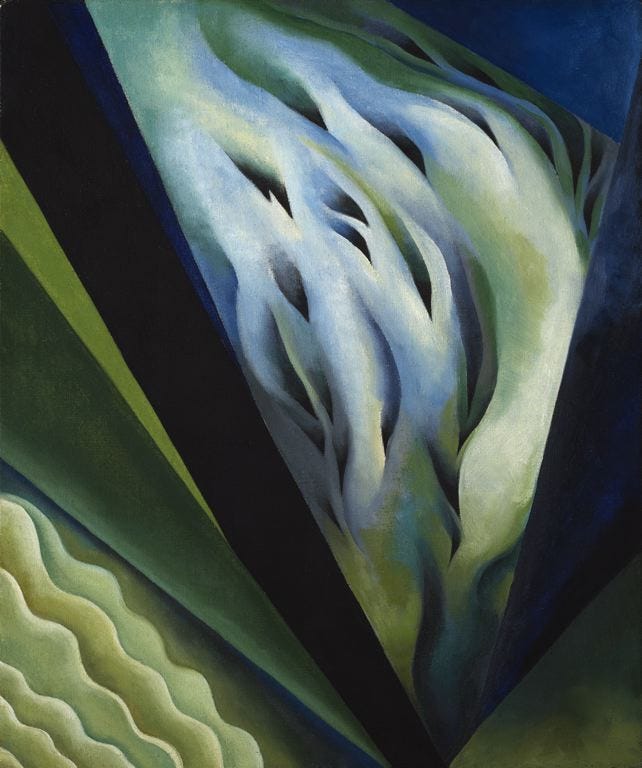
blue cathedral by Jennifer Higdon premiered on May 1, 2000, performed by the Curtis Institute of Music's Symphony Orchestra under the direction of Robert Spano. The piece was commissioned to commemorate the 75th anniversary of the Curtis Institute of Music, where Higdon is an alumna and faculty member..
blue cathedral is one of Jennifer Higdon's most celebrated works, written as a tribute to her younger brother, Andrew Blue Higdon, who passed away in 1998. The composition reflects Higdon's personal journey through grief and healing, offering a contemplative and serene musical landscape. The title combines the imagery of a vast, expansive sky ("Blue") with the notion of a sacred, spiritual place ("Cathedral"), symbolizing a space for reflection and introspection.
The piece is scored for a large orchestra, including various percussion instruments such as Chinese reflex bells and tuned water glasses, which contribute to its ethereal and contemplative atmosphere. blue cathedral is characterized by its rich orchestral textures and lyrical melodies, creating an ethereal and introspective atmosphere.
1. Opening: The piece begins with soft, shimmering sounds in the strings and subtle chimes, evoking a sense of wonder and tranquility. The opening sets the stage for a journey through different emotional landscapes.
2. Main Themes: Higdon weaves delicate flute and clarinet solos throughout the composition, representing a personal and emotional conversation between her and her brother, respectively. These solos engage in a musical dialogue, reflecting the personal and intimate nature of the work.
3. Climactic Passage: The music gradually builds to a powerful and emotional climax, with the full orchestra creating a lush and resonant sound. This section symbolizes the cathartic release of grief and the embrace of memory and love.
4. Conclusion: The piece ends on a serene and reflective note, with the ethereal sounds of the celesta and the gentle resonance of bells, symbolizing a sense of peace and resolution.
blue cathedral has been widely acclaimed for its emotional depth and accessibility. It is frequently performed by orchestras around the world and has become one of Higdon's signature works. The piece resonates with audiences for its ability to convey universal themes of loss, remembrance, and hope through a beautiful and evocative musical language. It is a deeply personal and moving work that invites listeners to reflect on their own experiences of loss and healing, offering a musical space for contemplation and emotional connection.
Jennifer Higdon (b. 1962), American - blue cathedral
YouTube Performance: Royal Concertgebouw Orchestra condcuted by Stéphane Denève
Spotify Performance: Atlanta Symphony Orchestra conducted by Robert Spano
We hope you enjoyed this issue of Drop the Needle: Music that Matters! Your feedback is invaluable to us. Share your thoughts and insights about the music and content featured in this issue. Leave a comment below—whether it's a quick note or a detailed suggestion, we'd love to hear from you.
Join the conversation and let your voice be heard!
Portions of this content, including this disclaimer, were informed and structured with the assistance of ChatGPT 4.0 by OpenAI, followed by human review and editing for accuracy, context, and plagiarism.
Neoclassical music is a genre of music that emerged in the early 20th century as a reaction against the excesses of Romanticism and the dissonances of early modernism. It draws inspiration from the clarity, balance, and formal structures of 18th-century classical music, particularly the works of composers like Haydn, Mozart, and early Beethoven. Neoclassical music often features a return to traditional forms, such as the symphony, sonata, and concerto, but incorporates modern harmonies, rhythms, and orchestration techniques. This blend of old and new creates a distinctive style that emphasizes order, precision, and emotional restraint. Notable neoclassical composers include Igor Stravinsky, Paul Hindemith, and Sergei Prokofiev.
The title refers to the legendary King Anfortas from Arthurian myth, who is wounded and suffers from an incurable wound that can only be healed by the Holy Grail. This mythological reference symbolizes a state of profound suffering and longing. In Adams' composition, this movement is characterized by its introspective and somber tone, evoking a sense of melancholy and spiritual searching. The music reflects the themes of pain and the quest for healing, employing haunting melodies and a subdued orchestration to create an atmosphere of deep emotional resonance.
Meister Eckhardt (c. 1260-1328) was a German theologian, philosopher, and mystic, known for his profound and often controversial teachings on spirituality and the nature of God. Born Eckhart von Hochheim, he was a member of the Dominican Order and taught at the University of Paris. Eckhardt's mysticism emphasized the direct experience of God, advocating for a personal and internal connection with the divine that transcends traditional religious practices. His sermons and writings often explored themes of detachment, the union of the soul with God, and the presence of God within all creation.
Eckhardt's teachings were both influential and contentious, leading to charges of heresy towards the end of his life. Despite this, his ideas have had a lasting impact on Christian mysticism and continue to be studied and revered for their depth and insight into the spiritual life.




